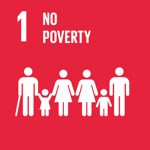Black Sigatoka resistant banana and plantain cultivars
 France
France
 Colombia
Colombia
 Costa Rica
Costa Rica
Executive Summary
Banana cultivation is of great economic and social importance in several Latin American countries and the most important phytosanitary problem affecting it is black Sigatoka. The objective of the project was to produce banana and plantain varieties resistant to the disease, generated by genetic transformation accompanied by a system of rapid assessment of resistance under controlled conditions. For reasons discussed in the final report, the main product which was to obtain at least one transgenic banana cultivar resistant to black Sigatoka was not achieved. However, 10 strains of the pathogen Mycosphaerella fijiensis were collected and the most virulent strain was identified, a model of pathogenicity in banana was designed, a protocol was established to quantify physiologically and histologically the resistance to M. fijiensis and a method for rapid assessment of resistance to the pathogen was designed. It was also fulfilled to develop the steps that lead to achieve a transgenic line including the construction of vectors containing defense genes against black Sigatoka, useful for the continuation of work by any laboratory aimed at solving this problem. The project was only able to make a few transformation runs that produced about 100 genetically modified lines which were taken to the greenhouse for evaluation which showed different ranges of tolerance in 10 of the lines evaluated.
The technological solution
The intended technological solution was one or several banana and plantain varieties resistant to black Sigatoka. Unfortunately, this solution, intended for the benefit of banana and plantain producers, was not completed. However, important methodological developments have been completed, which are useful for the continuation of similar work.
Results
As noted in the final report of the project, the main product that was at least one black Sigatoka resistant cultivar was not obtained, for reasons that are discussed in the report. However, a number of methodological pre-products were obtained, which constitute a contribution to the work of the consortium institutions and other laboratories working on the same problem.
Beneficiaries
The intended main beneficiaries were the farmers engaged in banana and plantain production in the region. Unfortunately, the main product which was at least one variety resistant to black Sigatoka was not obtained. However, research institutions on similar issues have benefited from the methodologies and protocols developed by the project as subsidiary products. These are described in the summary and the final report.
Sustainable Development Goals


Participating Organizations
Executor
- INIBAP - Francia
Associated
- Centro Agronómico Tropical de Investigación y Enseñanza (CATIE) - Costa Rica
- UNAL - CIB - Colombia
- Universidad de Tolima (UT) - Colombia




